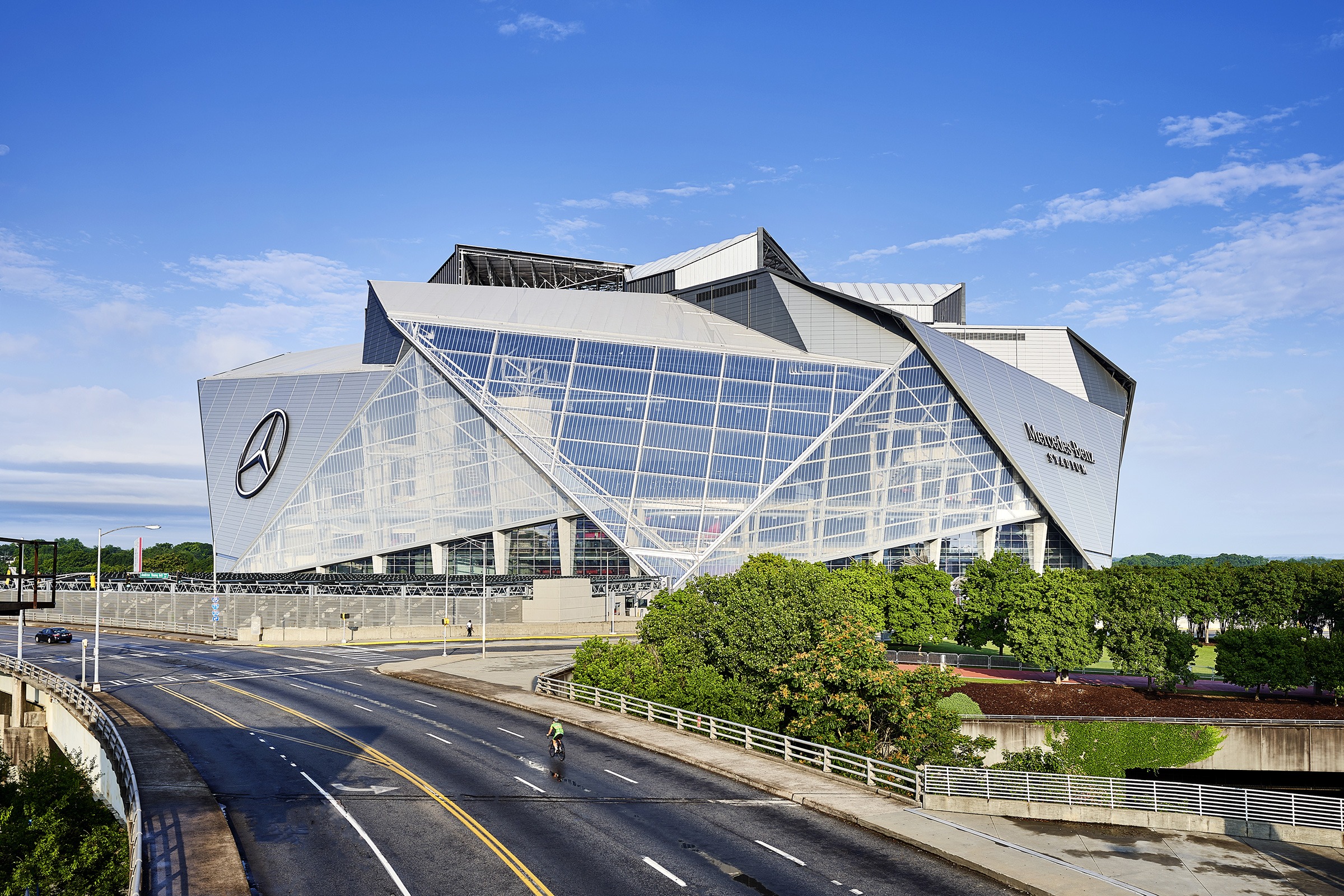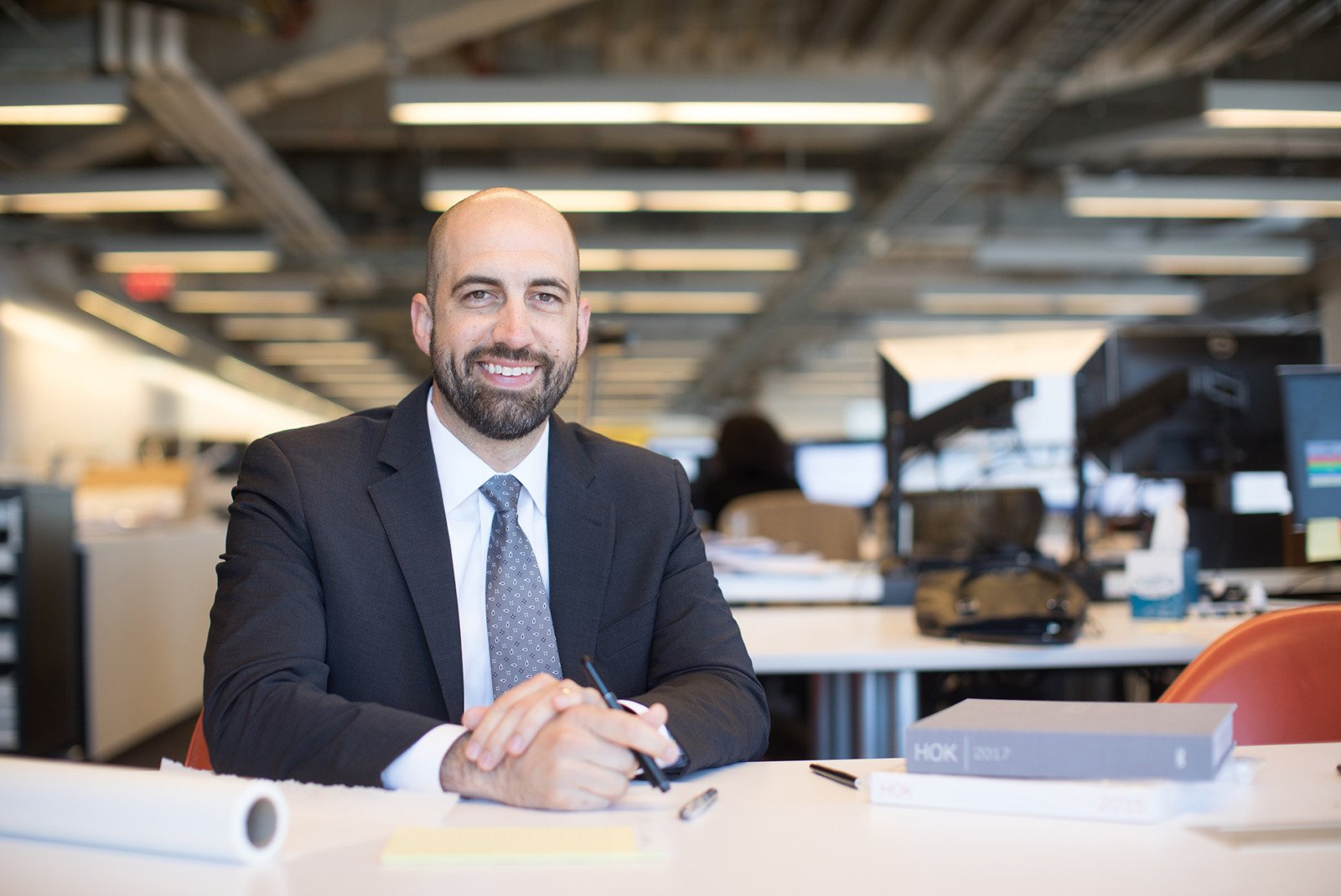Matt Breidenthal, PE, SE, LEED AP, is a regional leader of engineering, member of the firm-wide engineering leadership group and structural engineer at HOK.
He splits his time between HOK’s New York and Atlanta offices and has provided engineering leadership and design on a wide range of projects throughout the US, China and the Middle East.
How do HOK’s engineers approach their work?
We consider ourselves to be partners in delivering great design. We focus on collaboration, particularly in a project’s early stages, and on being approachable. Architects can have the wrong impression that engineers will ruin the fun. But we communicate our excitement about exploring design ideas with the architects. We don’t ever want architects to self-edit because they don’t think something is possible. We just want to share our expertise so team members understand every option.

LaGuardia Airport’s New Terminal B in New York
It’s an exciting time for engineers at HOK. We’re working on many of the firm’s highest-profile projects, including stadiums, airport terminals, hospitals, university buildings, offices, labs and corporate campuses. This includes Mercedes-Benz Stadium in Atlanta, the Hartsfield-Jackson Atlanta International Airport Terminal Modernization, LaGuardia Airport’s New Terminal B Project in New York, the Salt Lake City International Airport Passenger Terminal, the Phillips 66 Corporate Headquarters in Houston and the BJC Healthcare Campus Renewal Project at Washington University Medical Center in St. Louis.
What are the benefits of having in-house engineers for HOK’s clients?
Many of us have joined HOK from external engineering firms. Though these firms are wonderful and we successfully collaborate with them on many projects, I value the benefits we get from working in-house with HOK’s architects and designers. This integrated process is easier and faster, which leads to better projects for our clients. Whether it’s grabbing a colleague for a quick charrette, casually bouncing ideas off of each other or having team members huddled around a table eating dinner as we work toward a late-night deadline, I enjoy many things about working side-by-side. This is an exhilarating environment for engineers.

Mercedes-Benz Stadium in Atlanta
What do you mean by integrated design?
It means we use an interdisciplinary approach that continues through the entire design process. We bring the expertise of all disciplines into the design process as early as possible, when the team is making the most important, formative decisions. This enables us to develop the entire building as one team. We’re able to ensure the integrity of those decisions throughout the development of the design and final construction documents. It’s important to involve the right people, maintain a collaborative approach and stay with it through the end of design.
What are the benefits of integrated design for clients?
Integration among the design and construction team must begin early in the process, before it becomes cost prohibitive to make design changes later in a project. It enables us to work with our clients to make intelligent early-phase decisions that optimize efficiencies, quality and cost.
If I ask leaders of every design discipline to describe the best solution for any given challenge, each person may give me a different answer. That doesn’t help a client. They need their design team to present them with holistic solutions that emerge from interdisciplinary value judgments. Integrated design allows us to do that.
What type of tools and processes are you developing to support this integrated design approach?
HOK’s people are collaborating across many disciplines to develop proprietary processes and technologies that harness our designers’ knowledge in ways that previously were impossible. We are building powerful parametric 3D modeling software that can rapidly generate multiple geometries and system solutions.
We have several advantages in developing our own parametric modeling tools. First, because many of our engineers have a coding background, we know what these software tools can do and we’re comfortable with them. Second, we don’t just develop conceptual and schematic designs. We take those designs from concept to working on site with the contractors and are accountable for making sure that models hold up all the way through construction. Finally, because we sit next to and work so closely with our architectural colleagues at HOK, we can collaborate and develop the tools strategically. We’re in a unique situation.
